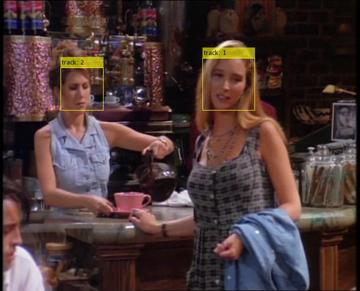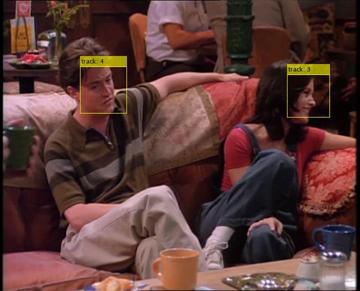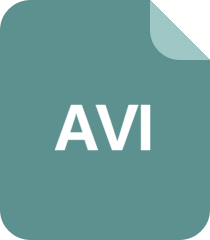# Multiple face tracking in video
MATLAB implemented software for multi-face tracking in videos. Originally developed for an [ECCV 2016 workshop paper](#citation) to track characters' faces in TV shows.
Code provided by James Charles.
This work is licensed under the Creative Commons Attribution 4.0 International License. To view a copy of this license, visit http://creativecommons.org/licenses/by/4.0/ or send a letter to Creative Commons, PO Box 1866, Mountain View, CA 94042, USA.
## What it does
Given an input video the software will track face bounding boxes sequentially from one frame to the next. Tracks are saved to disk and a resume feature allows you to stop and start tracking from where you left off.


## Included
* Software for tracking faces in videos.
* Visualisation function to view the tracks.
* Demo script and video to illustrate how to use the code.
## How it works
This software detects faces using the frontal-face detector of Viola-Jones. Face bounding boxes are then tracked using the Kanade-Lucas-Tomasi (KLT) algorithm. The tracked key points (BRISK) are updated when a new face detection appears. Key points are only searched for within the centre of the face bounding box, this reduces drift to background content but also enables tracking to profile faces.
## Dependencies
The code has been tested in MATLAB R2014a and will presumably also run in later versions.
The following MATLAB toolboxes are required:
* Computer Vision System Toolbox
* Control System Toolbox
* Image Processing Toolbox
## Citation
If you use this code then please cite:
```
@Article{Charles16b,
author = "Charles, J. and Magee, D. and Hogg.",
title = "Virtual Immortality: Reanimating characters from TV shows",
booktitle = "ECCV Workshop on Virtual/Augmented Reality for Visual Artificial Intelligence (VARVAI)",
year = "2016",
}
```
毕业小助手
- 粉丝: 2768
- 资源: 5583
最新资源
- 基于启发式算法的边缘计算环境深度神经网络卸载策略优化:综合DNNs应用响应时间、计算能耗及租用成本的权衡研究,边缘计算环境下深度神经网络卸载策略的优化研究:基于启发式算法的端-边-云多重资源管理策略及
- 基于紧束缚模型Matlab计算结果分析:二维SSH模型的投影能带与原胞能带对比研究,基于紧束缚模型的二维SSH模型计算:投影能带与原胞能带分析,基于紧束缚模型,使用matlab计算二维SSH模型,结果
- 4.信号和槽+事件2024-06-15.wmv
- cn.wildfirechat0.88老版本jar包,包括common-0.88.jar,sdk-0.88.jar
- 模拟芯片行业分析合集2023
- 基于模糊逻辑与递推最小二乘的整车质量估计算法:置信度评估与鲁棒性提升的应用层算法模型,基于模糊逻辑与递推最小二乘的整车质量估计算法:提高鲁棒性与估计精度,实车应用场景参考,整车质量估计算法,采用sim
- 动平衡计算工具:许用不平衡度、质量偏心度及不平衡量计算器,造纸机资料详解:残余不平衡量与允许偏重量的计算公式(N.m与g.mm),动平衡计算器:全面涵盖不平衡度与残余不平衡量计算的实用工具-造纸机资
- autosar相关资料免费分享
- 基于单片机的智能窗帘的设计
- ble自用资源上传,也免费分享
- 零基础入门转录组下游分析-加权基因共表达网络分析教程配套资源
- DeepSeek学术科研应用速成手册
- 基于Comsol粒子操控仿真的多粒子系统操作研究:双胞胎、四胞胎声镊粒子悬浮及操控实验的探讨,基于Comsol粒子操控仿真的多粒子系统操作研究:双胞胎、四胞胎及声镊悬浮技术的实践与应用,Comsol
- Rancher学习视频
- 基于双闭环控制的11电平三相MMC逆变器并网技术:载波移相调制、电容电压均衡与二倍频环流抑制的Simulink仿真研究,基于双闭环控制的模块化多电平换流器逆变器的并网设计与仿真优化:探索二倍频环流抑制
- 小红书平台2023年5月教育行业报告:女性及年轻群体为核心用户的教育市场趋势与营销策略
资源上传下载、课程学习等过程中有任何疑问或建议,欢迎提出宝贵意见哦~我们会及时处理!
点击此处反馈



















